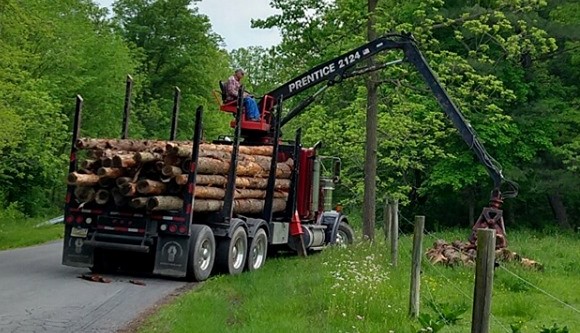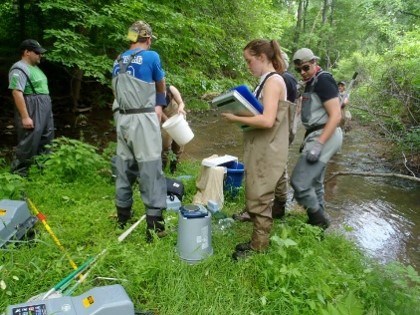It’s been 10 years since the Northcentral Stream Restoration Partnership was formed. Driven by the motto, “Everyone does a little, so no one has to do a lot,” the Partnership was created to improve the water quality on agriculturally impaired streams in northcentral Pennsylvania. Coordinated by NPC, and including state agencies (DEP & PFBC), county conservation districts, non-profit organizations, and willing landowners, the Partnership focused on 15 project sites across the region during that first construction season in 2009. Since then, the partnership has worked on over 120 project sites and impacted 25 miles of stream.
That’s 10 years of working together to improve the water quality for our communities, 10 years of recovering aquatic habitat, and 10 years of supporting PA’s working agricultural landscape. For the partners, volunteers, and landowners that have seen or worked on a project site firsthand, you might also be thinking, “That’s A LOT of rocks, logs, rebar, and sweat equity!”

Here’s a quick recap of the problems the partnership is tackling, their goals, and the solutions they are implementing.
What’s the problem?
The vibrant farmlands that cover the countryside help make Northcentral PA such a desirable place to work, live and recreate. During the settlement of the area, many of the trees throughout the watersheds were cleared for lumber then made way for crops, livestock, and homesteads. The removal of the vegetation, the introduction of livestock, and increased stormwater runoff from pastures and hardened surfaces, whether compacted dirt, asphalt, or a roof; has led to the erosion of stream banks throughout the area. Eroding stream banks are a direct source for sediment, Nitrogen, and Phosphorus to enter streams. This sediment smothers aquatic life as it covers the stream’s substrate and impairs the overall stream health.

The Partnership’s Goals:
Reducing erosion and sedimentation into the region’s streams, is a goal of many local and state plans and initiatives working to improve the Chesapeake Bay. In addition, the Partnership is working to:
- Stabilize stream banks
- Stabilize the riparian buffer
- Increase filtration of run-off
- Improve/create aquatic habitats
- Support fish and aquatic life
The Solution:
The partners use proven in-stream stabilization structures, such as log vanes and mudsills, to remove velocity and pressure from the stream banks. They also implement Agricultural Best Management Practices (BMPs), such as walkways and fencing, to help reduce the impact livestock have on the streams by getting them out of the stream channel and back from the stream’s edge. The type of structure used depends on the stream conditions, and takes into consideration how the water will react under normal flows and high water events.

Knowing the benefits:
Some restoration benefits happen instantly, such as the way the water flow responds to the new structures. Others take time, as the vegetation grows creating a riparian buffer, soaking up excess nutrients and stabilizing the bank. Macro-invertebrates and fish return to the water, finding habitat and renewed food sources. Documenting the pre and post construction condition of the streams’ physical and biological conditions is a vital piece of the puzzle. Aforementioned, the change and return to health is a gradual process, which is why NPC is extremely proud and thankful to our members for their support of the Partnership throughout the decade.
As we continue to reflect on the past 10 years, we will be highlighting in our next blog these long-term signs of success at some of our earliest project sites in the Little Shamokin Creek Watershed. And since the partnership wouldn’t be where it is today without the passionate people that had the foresight to take action 10 years ago, we’ll also be taking a moment to acknowledge the Little Shamokin Creek Watershed for their sustained efforts to help bring the watershed back to health in the area. You can join us for this celebration at the upcoming Little Shamokin Creek Watershed Association’s book signing event for local author, Matt Miller, on Monday, September 30th at 6:30 PM. Learn more about Matt’s book, “Fishing through the Apocalypse,” and his connection to the area.

